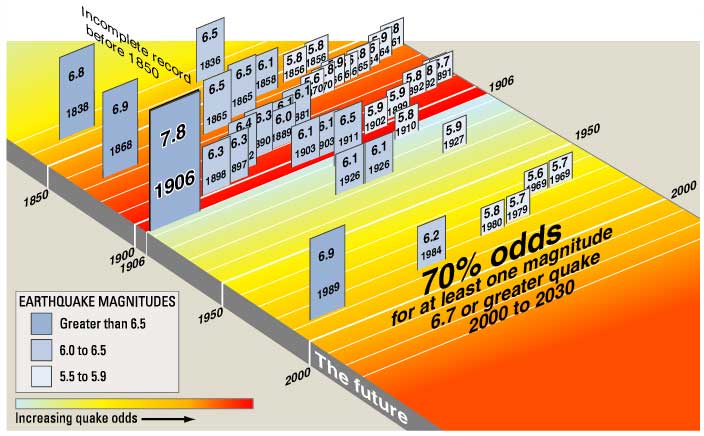Comparison
to Previous Studies
There are important differences
between the 1990 and WG99 studies. WG99 analyzed five additional faults, which
would be expected to increase the estimated regional probability of major quakes.
This expected increase was largely compensated for, however, by two effects
not included in the 1990 report: (1) slip on faults in the absence of earthquakes
and (2) the effect of the 1906 earthquake in reducing quake activity throughout
the region.
Additionally, the 1990 study
considered only earthquakes of about magnitude 7 in determining there was a
67% chance of major quakes in the Bay region between 1990 and 2020. WG99 decided
to focus on earthquakes of magnitude 6.7 and greater in their calculations,
because the 1994 Northridge quake in southern California was only magnitude
6.7 yet killed 57 people and caused more than $20 billion in damage.
Magnitude 6.7 or greater
quakes can cause damage throughout the Bay region, but even smaller quakes could
be serious if centered in an urbanized area. WG99 found an 80% chance of one
or more magnitude 6 to 6.6 quakes occurring in the Bay region before 2030.
 |
| The rate of large
earthquakes in the San Francisco Bay region abruptly dropped after the
Great 1906 Earthquake. The San Andreas Fault slipped so much over such
a great length in that quake that the strain was reduced on most faults
throughout the region. Strain has been slowly building up again. However,
the level of seismic activity has not yet reached that of the late 1800's. |
URL of this page:
https://pubs.usgs.gov/fs/1999/fs152-99
Maintained by: Michael Diggles
Last modified: May 6, 2005 (mfd)
